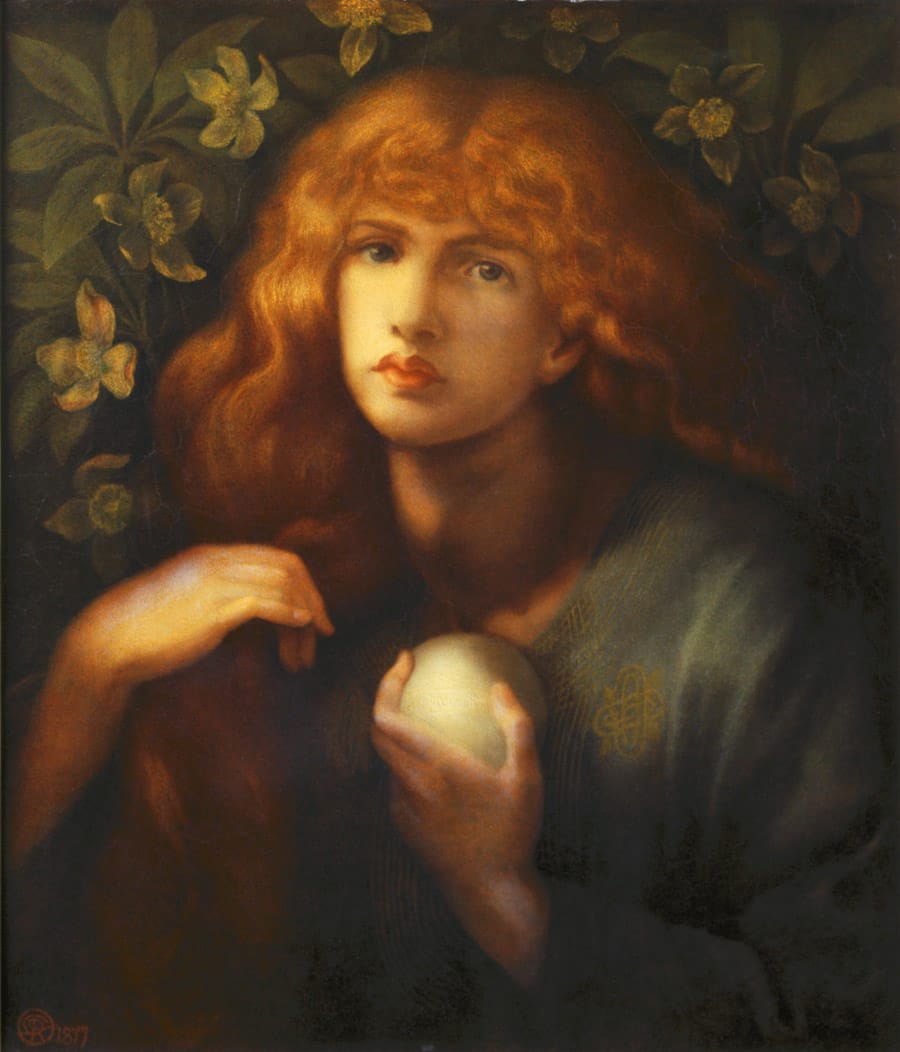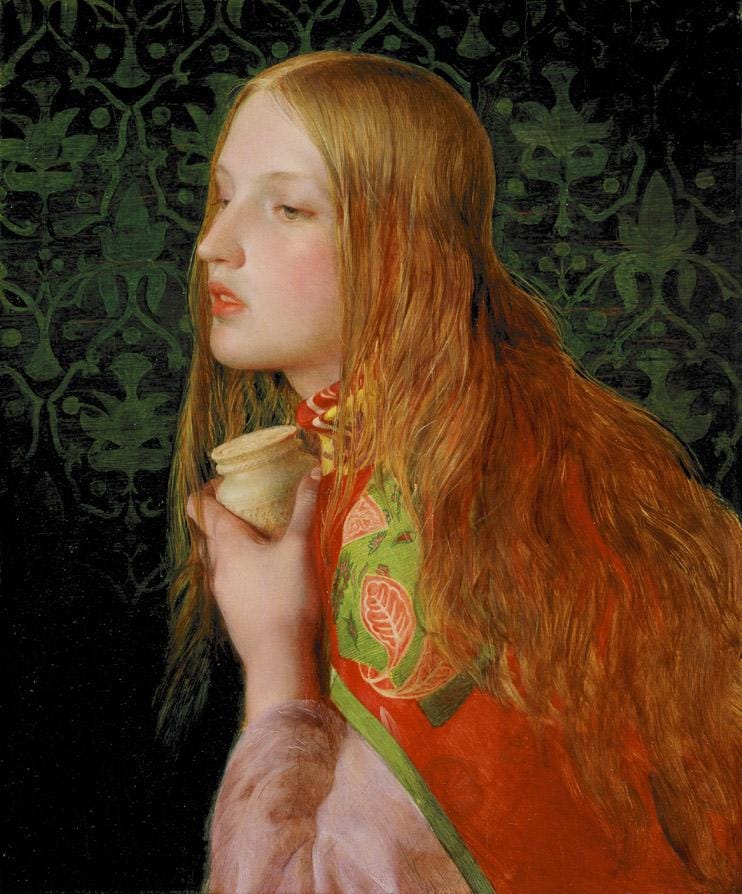Mary Magdalene in the History of Art
Mary Magdalene has been one of the most popular subjects for painters and sculptors, and their works reflect the tastes and predilections of their time and place.
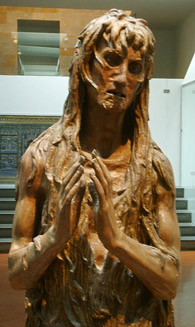
First is an example of Mary the penitent or hermit: Donatello's extraordinary anguished figure of 1453-55 (above), where Mary resembles Christ. Below are two paintings from around 1525. The first is one of Lucas Cranach the Elder's Magdalenes; we know it's her because she is holding an ointment jar.
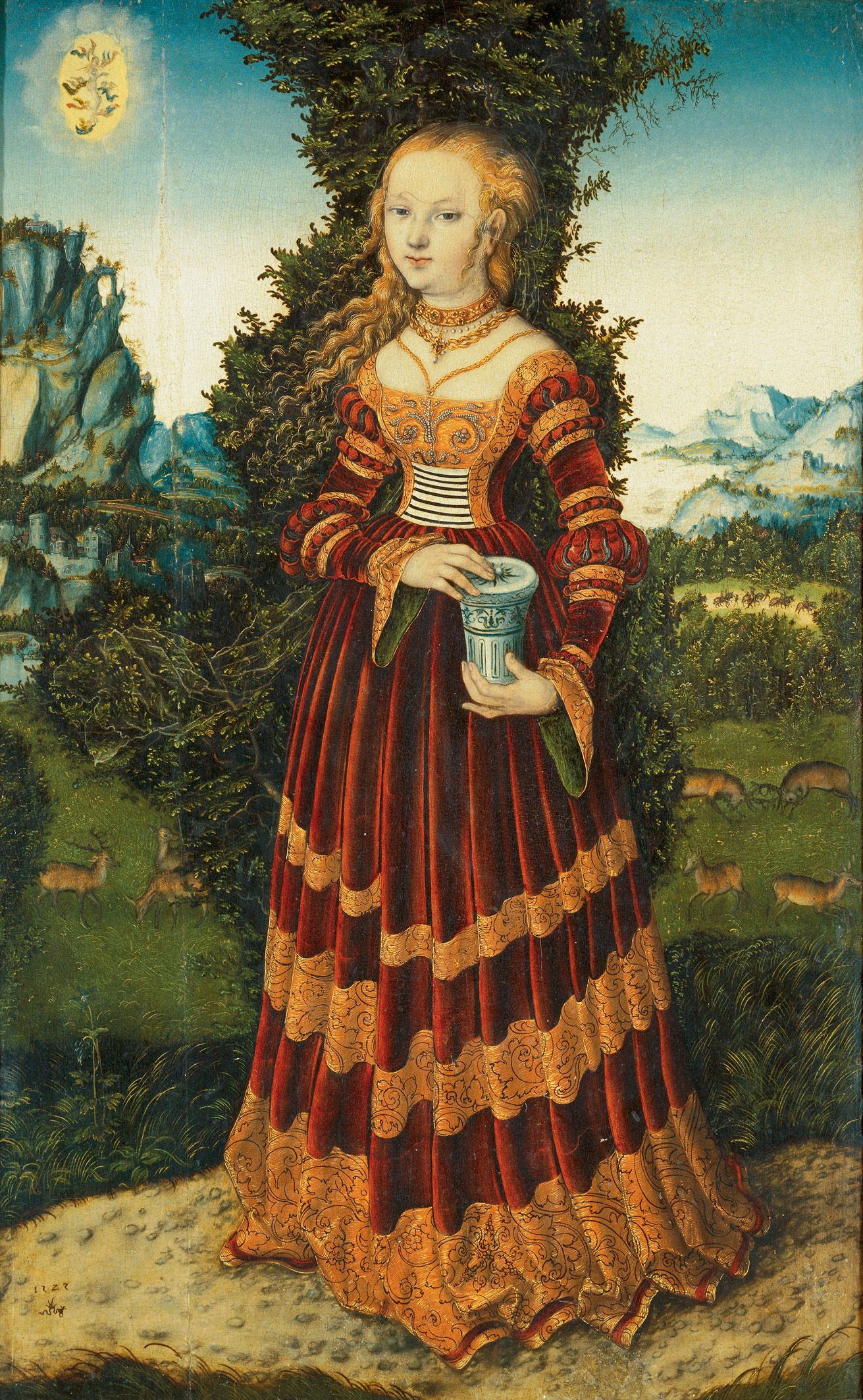
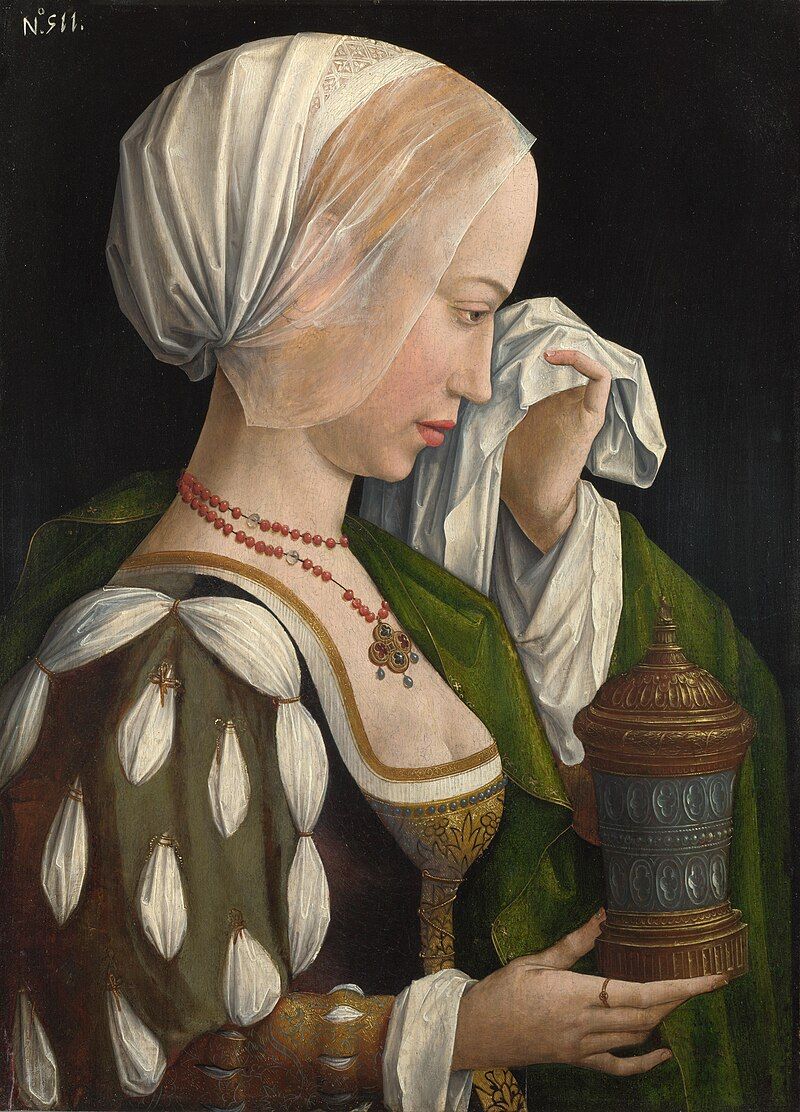
This is a favorite of mine: The Magdalen Weeping, There is little to no information about the painter and Wikipedia declares it an "oil on oak panel painting attributed to the workshop of the unidentified Early Netherlandish artist known today by... the Master of the Legend of the Magdalen, active in Brussels." It was quite racy for the time; I think it's superb.
There are countless other Magdalenes. Below is a representative saintly image of her at the Crucifixion - it is a detail from some time in the 16th century according to Wikipedia but I have yet to discover the original.
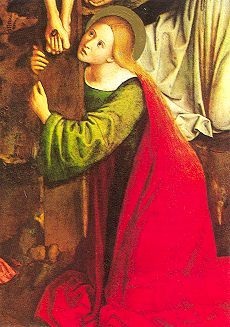
In the Baroque era, Mary Magdalene needed to be saved.
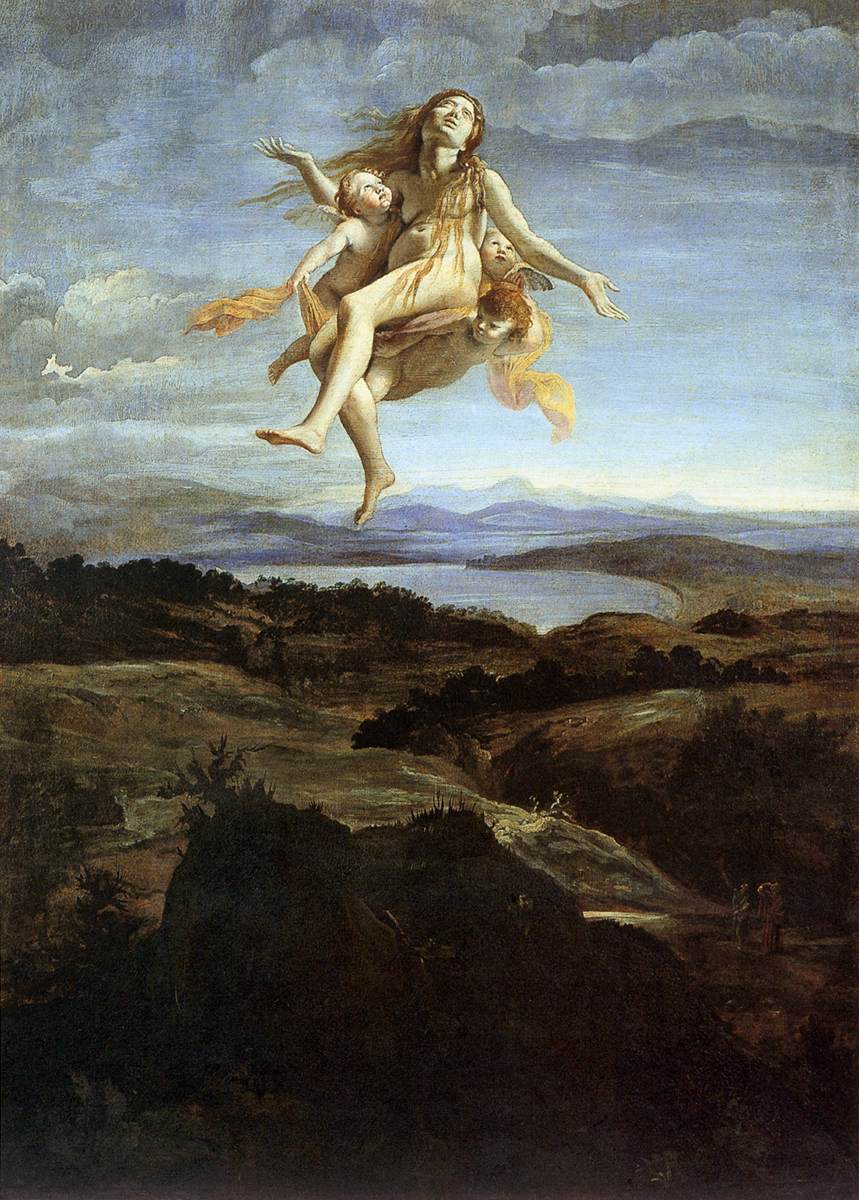
Other images of Mary are scattered throughout this chapter, but she was most popular in the 16th and 17th centuries - Pietro Perugino here, Titian here, El Greco here, but there is also (later) Canova here and Lefebvre here. For the Pre-Raphaelites' take on the subject, here.
There are also some odd ones. The painting below of The Holy Women at the Sepulchre is by Rubens from around 1611-1614. Truly not one of his best. Those are chubby angels on the right and the central woman lifting the veil is thought to be Mary Magdalene, with the Virgin Mary next to her. It is in the Norton Simon Museum, Los Angeles.
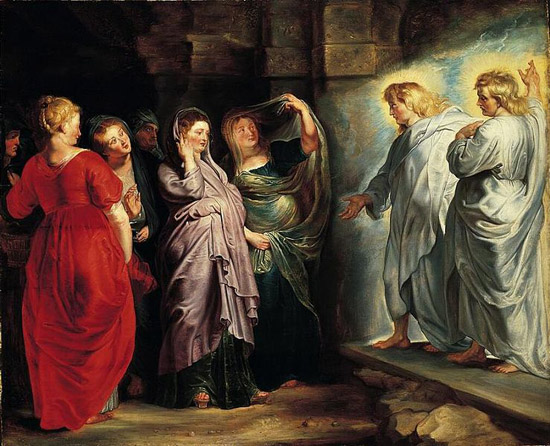
Below is a much better Rubens Magdalene - it is a small but exquisite detail from The Deposition (La Pietà in Italian) (around 1602 and possibly as late as 1606), in the Galleria Borghese, Rome.
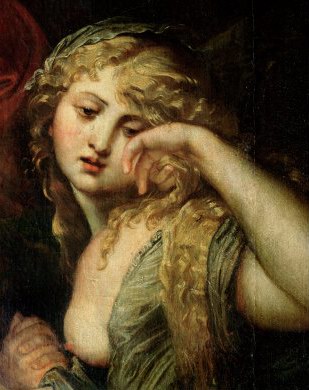
Then there are the literally darker Baroque images like this one from Spain:
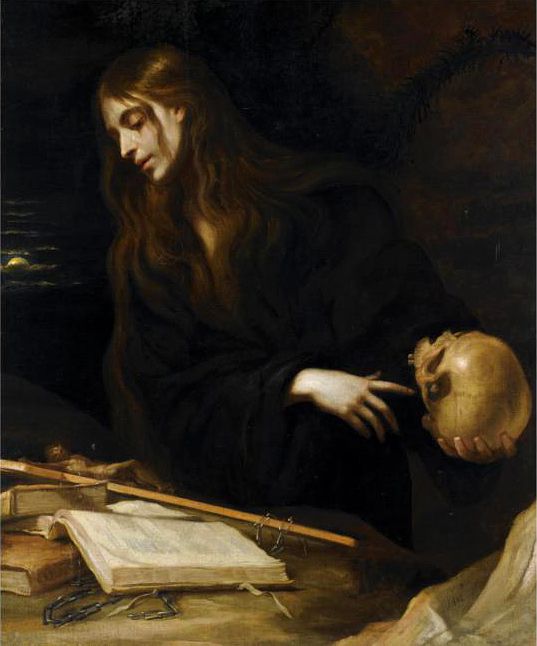
By the time of the pre-Raphaelites, who were very fond of her, she had acquired red hair (along with her skull), because, you know...
